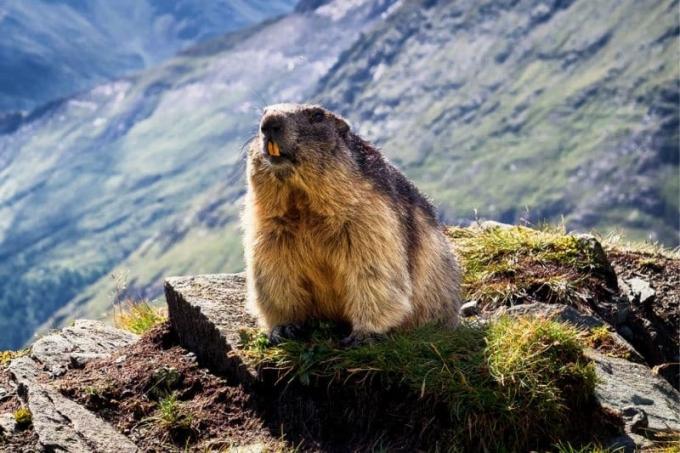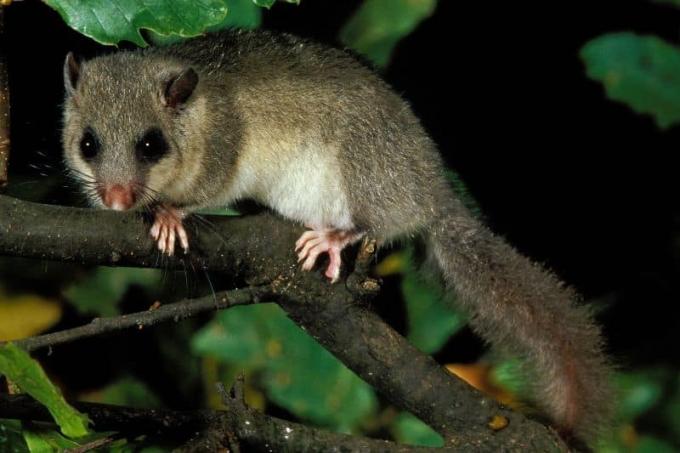
Some animals hibernate to survive a season when food is scarce. But you have to prepare for it in good time in autumn. In addition, there are other forms of hibernation in the animal kingdom.
In a nutshell
- before hibernating, the animals eat up fat reserves
- some species wake up to defecate, for example
- Breathing, heartbeat and body temperature are significantly reduced
- The body temperature of hibernators must not fall below 0°C
- Fat reserves are mainly needed for the waking up process
Table of contents
- animals in hibernation
- Animals in hibernation
- Animals in hibernation
- frequently asked Questions
animals in hibernation
Animals that hibernate have to eat up a thick layer of fat in time for winter. They draw on these fat reserves for the next assembly. In addition, they reduce their bodily functions to a minimum so as not to use up too many resources unnecessarily.
bat (Chiroptera)

In Germany there are 25 local ones bat species. All of these animals hibernate and require suitable quarters for this, which are not identical to the summer quarters. She uses most of her fat reserves for the waking up process.
- Length of sleep: early November to late March
- Winter quarters: caves, tree hollows, attics, abandoned buildings
- Behaviour: Hibernation in small groups
- Heart rate/respiration per minute: 10 heartbeats, approx. 2 breaths
- Body temperature: 3 – 10°C
- feed supply: Insects
A notice: In rare cases, bats fly south to hibernate. This is currently still the exception, but climate change can favor this.
field hamster (Cricetus cricetus)

European hamsters are one of the most endangered species in Germany, as their habitats are disappearing more and more. Compared to other species, they wake up and eat at regular intervals. They create their own pantries in the fall. Nevertheless, they are already eating up a layer of fat.
- Length of sleep: October to late March
- Winter quarters: burrows
- Behaviour: wake up every 5-10 days to feed, males and females overwinter separately
- Heart rate/respiration per minute: 5 heartbeats, 1 breath
- Body temperature: 2 – 3°C
- Feed supply: seeds
dormouse (Muscardinus avellanarius)

Dormice start hibernating early. It can therefore happen that they are still disturbed in October. They usually manage to return early in the hibernation phase and wake up again the following year.
- Length of sleep: October to late April
- Winter quarters: builds nests in hollow tree stumps, under roots or in burrows
- Behaviour: overwinters individually curled up in the nests
- Heart rate/respiration per minute: 35 heartbeats, 11 breaths
- Body temperature: approx. 3°C
- Food supply: seeds, fruits, buds
marmots (Marmota marmota)

Marmots are found in southern Germany, in the Alps. They hibernate under a thick blanket of snow and therefore need plenty of reserves. Around 1/3 of your body weight is also required to survive this time.
- Length of sleep: October to March
- Winter quarters: earthworks
- Behavior: Overwintering together in the burrow, burrow fills up with roots, moss, stones and droppings in the fall a length of two meters closed, every three to four weeks short waking phases for dropping and urine
- Heart rate/respiration per minute: 3-5 heartbeats, 2 breaths
- Body temperature: 7 – 9°C
- Food supply: grasses, roots, seeds, rarely fruits
A notice: Marmots are the only species that are not induced to hibernate by environmental influences. They have an internal seasonal clock that controls hibernation regardless of temperature or food availability.
dormouse (glis glis)

The habitat of dormouse is becoming less and less, which is why he increasingly uses the advantages of buildings. It can happen that the dormouse uses an attic or a garden shed for wintering. If the edible dormice disturbs, it should not be relocated during this time. It can only be relocated in the spring.
- Length of sleep: September to early May
- Winter quarters: 30 - 100 cm deep burrows
- Behavior: sleeps curled up to reduce heat loss, wakes 1-2 times to reduce cell death
- Heart rate/respiration per minute: 5 heartbeats, 1-3 breaths
- Body temperature: approx. 5°C
- Feed supply: nuts, acorns, beechnuts, chestnuts
Special case: hedgehog (Erinaceidae)

The hedgehog is a special case among hibernators, because whether it hibernates or not depends on environmental factors. Although hedgehogs usually retreat to quarters in winter, in temperate areas it can happen that they do not hibernate properly. Should it be warm enough, it is not uncommon for a hedgehog to still be active during the winter months.
- Length of sleep: November to April
- Winter quarters: piles of leaves, undergrowth, fallow areas with high vegetation
- Behaviour: hibernates alone, curls up
- Heart rate/respiration per minute: 5 heartbeats, 2 breaths
- Body temperature: 1 – 8°C
- feed supply: insects, snails, worms, spiders
A notice: Due to the superficial hibernation, the hedgehog tolerates very low temperatures. If the body temperature falls below 1°C, the hedgehog begins to generate heat, during which the fat reserves are used up to protect themselves from frostbite.
Animals in hibernation
The difference to hibernation is that the animals spend a significant part of the winter actively. They set up food depots, but sometimes also go in search of food.
The following animals hibernate:
- Squirrel (Sciurus)
- Badger (Meles meles)

The brown bear (Ursus arctos), which is no longer found in the wild in Germany, also hibernates. A newly introduced species, the raccoon (Procyon lotor), also hibernates by foraging between resting periods during the winter.
Animals in hibernation
Only so-called change-blooded animals fall into hibernation. These are animals that can adapt their body temperature to the environment. In very cold temperatures or When the temperature falls below zero, they go rigid and are completely motionless. This is completely safe for them, because they have a kind of "antifreeze" in their blood, which protects them from cell damage.
The following animal groups fall into hibernation:
- amphibians
- insects
- reptiles
- snakes
- snails
- some fish species

Rigidity doesn't usually happen suddenly. The animals begin to withdraw when it gets cooler and also move into winter quarters. Compared to hibernation, however, they can wake up much less dangerously and return to rigidity.
frequently asked Questions
No, the dormouse is the only mouse that hibernates. Other species, for example, build up stores on which they live in winter.
The duration of the waking up process depends on many factors. In some species, the process can take a few hours, and in some animals even a few days. Factors such as changes in ambient temperature can affect duration.
If a hibernator wakes up too early because it was disturbed in its roost or because it gets very warm for a short time and then gets cold again, this often means the death of the animal. They no longer have sufficient resources to go back into hibernation and wake up again.
